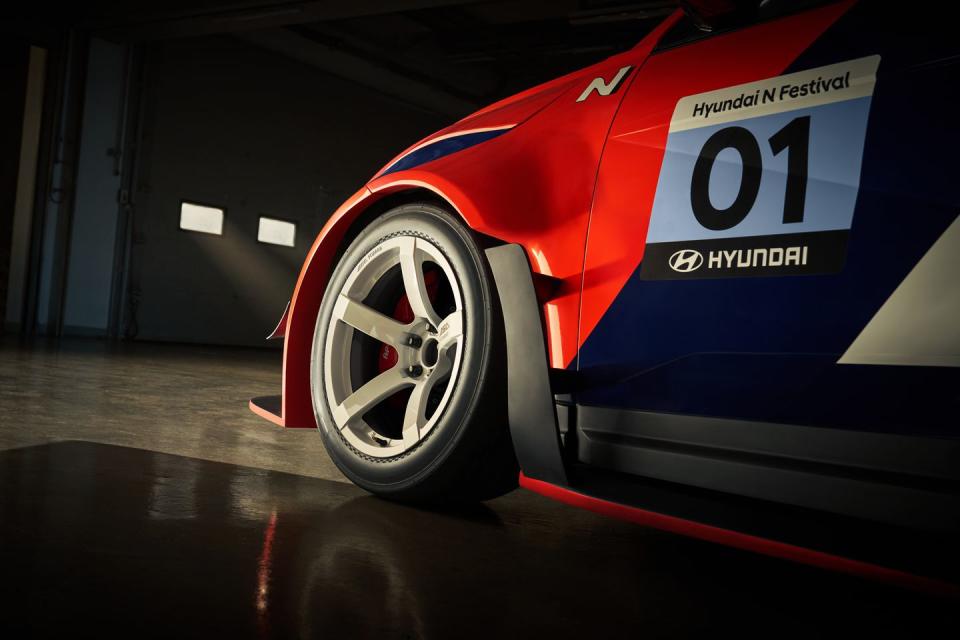- Hyundai revealed the Ioniq 5 N eN1 Cup car at a practice session leading up to the 2024 Hyundai N Festival, a one-make race series to be held in South Korea in late April.
-
The Cup car is based on the roadgoing Ioniq 5 N and features racing upgrades including slick tires and a stripped interior.
-
The new race car will make its debut at the Inje Speedium circuit in South Korea on April 27 as part of the new eN1 class of racing.
With the introduction of the new Ioniq 5 N eN1 Cup car, Hyundai is taking its Ioniq 5 N racing in an all-new electric professional racing series. The new Cup car builds on the already sporty Ioniq 5 N, the performance version of the Ionia 5 electric SUV, bringing it up to the demanding level required for professional racing.


Hyundai started by giving the car a complete makeover. The front end is all new with a large lip and prominent dive planes protruding from a more functional front bumper. New over-fenders round out the eN1’s body-kit changes, while a gargantuan rear wing sits proudly at the rear of the car.
We want whatever sort of weight-loss diet Hyundai used to get the Ioniq 5 N so svelte. While the roadgoing car weighs just over 4900 pounds, Hyundai estimates the Cup car tips the scales at closer to 4350 pounds. Unsurprisingly, the secret to shedding all those pounds is simply removing the excess stuff. Gone are the bulky 21-inch wheels with all their unnecessary weight. They’ve been replaced by a set of lightweight 18-inch forged wheels wrapped in motorsport slicks. The standard glass windows are swapped for lighter polycarbonate replacements, and the hood is replaced with a duplicate made of fiberglass-reinforced plastic (FRP).
The interior is stripped, with Hyundai removing anything deemed unnecessary. The regular seats are gone, with a lone bucket seat for the driver remaining Adding some weight back to the eN1, Hyundai is fitting each car with an FIA-compliant roll cage and fire extinguishers to improve safety.
Under the bodywork, the powertrain is untouched. The dual motors on the eN1 Cup car produce the same 641 horsepower as those on the road car. The race car also inherits the 84.0 kWh of usable energy from the standard car’s battery, which remains good for charging from 10-80 percent in 18 minutes. Hyundai hasn’t released performance figures, but our estimates put the standard car at roughly 3.1 seconds to 60 mph, so the eN1 should be quick. Additional changes include adjustable suspension with two-way dampers and a high-voltage shutoff.
In a move that will hurt competitiveness somewhat but may add to spectator enjoyment, Hyundai included the Ioniq 5 N’s e-Shift programming for the eN1. The system briefly interrupts the motors’ torque delivery to the wheels, creating a jolt similar to what might be felt during an upshift in a more standard dual-clutch automatic.
Once the eN1 hits the track at the Inje Speedium circuit in South Korea on April 27, it will take part in a new series called eN1. The series will compete under open regulations, allowing teams to compete with their chosen tire without being restricted to a single manufacturer. The series will kick off with its first official practice during the opening round of the Hyundai N Festival at Inje Speedium and will be followed by 10 races in the fifth round. The competition style will be varied, mixing in one-on-one knockout races with traditional sprint races.
You Might Also Like
